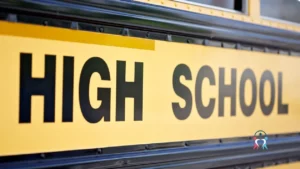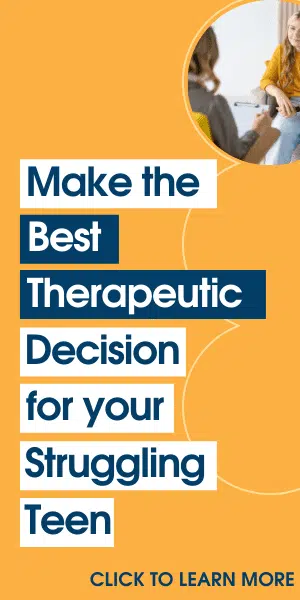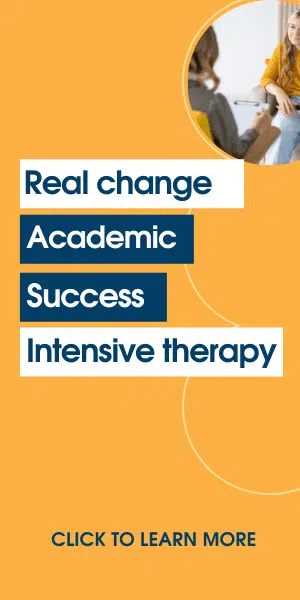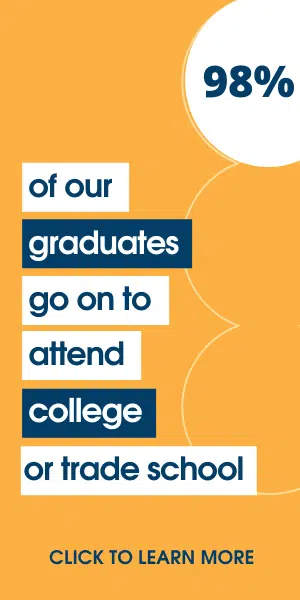A Parent’s Journey: Transition to High School
Matt is the loving father of a bright-eyed teenager named Alex, who is about to start high school. As Sarah watches her son step onto the bus, she wonders: Will Alex find his place in this big school? Will he make new friends? Is it possible for him to achieve academic excellence without being overwhelmed by stress? Matt is not alone…
Guiding Your Teen Through High School Challenges: The Crucial First Year of High School
As we begin another back-to-school season, parents’ hopes and worries deepen. School is very much the center of a teenager’s social world. As parents, we imagine our child’s success in school as the bridge to a bright future, while struggling in school, no matter the reason, can lead to increased drop-out rates and struggle as an adult. For at risk youth struggling with mental health concerns, school is a critical time.
While all vulnerable students can struggle at the start of school, the first year of high school is particularly problematic for adolescents who are struggling with self-esteem issues or emotional challenges.
These students find the transition to high school particularly difficult. The secret to helping these vulnerable kids is early intervention. These programs can be a guiding light in the darkest moments and a vital part of helping at risk youth navigate common high school challenges and come out successful.
It is crucial to understand the effects of school challenges ahead. Let’s examine some of the difficulties at-risk teenagers face in their initial year of high school.
Why the Transition to High School is Tough for Vulnerable Students
The transition to high school brings higher academic requirements and greater pressure to perform well in school. These grades matter for transcripts and GPAs, and students may feel more pressure on their shoulders. For those already struggling with their emotional or mental health, this added pressure can be hard to manage.
The First Year’s Gauntlet: Challenges Faced by Adolescents
Many students classified as at-risk are also ones who have academic struggles. Without the right interventions, these students can have low marks, and that can contribute to additional mental health and self-esteem issues. In high school, this becomes increasingly prominent because students need to score well to graduate successfully. If students fail their first year of high school, they’re more likely to drop out instead of graduating.

Stress Amplifiers: High Stress Levels in High School
Another concern that faces students in their first year of high school is a higher reported stress level. In 2013 the American Psychological Association started noticing that teens had higher stress levels than adults, and that has not changed since. Stress exasperates the mental health concerns of at-risk youth and thus makes them more prone to serious depression and anxiety concerns.
Increased Social Pressure and Disciplinary Challenges
The first year of high school is also a time when social pressures increase. More and more students are finding boyfriends or girlfriends, friend groups are becoming more exclusive, and those who don’t have a group may feel social pressure to fit in. Early teenage years are also a developmental time when peers and their opinions are of great importance, and this exasperates the problem.
Sometimes, at risk youth are going to experience disciplinary issues. They may act out because of their anxiety or depression, or they may have underlying learning disabilities, such as ADHD, that haven’t been properly treated and affect their behavior. Conditions like social anxiety disorder, PTSD, OCD, and panic disorders can manifest in behavioral concerns, and the school may not recognize the mental health side. Being disciplined for these behaviors adds to the challenge of trying to navigate the first year of high school.
Empowering Through Early Intervention: A Key to Good Behaviors
The key to helping these at risk kids is to intervene early before they have extremely low scores and low self-esteem. Identifying at risk students in the first few weeks of school, and pulling in appropriate interventions, is critical.
In order to utilize early intervention programs for at-risk students, you must be able to spot vulnerable students. Here are some red flags in the first year of high school that can help you find kids who need help.
- Avoiding new or difficult situations
- School refusal
- Sudden academic performance changes
- Issues with sleep
- Changes in eating patterns
- Pessimism
- Difficulty with reading comprehension
- Strong emotions without cause
- Frequent physical symptoms, like headaches or stomach aches
How to Choose the Right Help for Your Teen
If you are a parent or a teacher who’s noticing these red flags in the first year of high school, then it’s time to get help. The type of help you need depends on how severe the student’s behaviors are.
If you can catch at risk youth early and help them navigate high school challenges before they are in danger of failing, you may be able to move through these challenges with a little extra academic support and some behavioral counseling or professional therapy.:

However, if the emotional challenges and behavioral concerns have progressed to a more serious level, then you may need professional behavioral intervention. This is especially true if the student is self-harming or is at risk of harming others.
Similarly, if the student is dealing with any substance abuse issues, then they need professional intervention and may benefit from a residential treatment program. Early intervention programs for at-risk students should identify those who are at the highest risk for serious concerns and get them the professional help they need.
Often, if this help is given to the student early, their emotional well-being can be stabilized, and they can return to high school and enjoy better academic success. They’ll have the tools they need to navigate the remainder of the first year of high school and the challenges it brings with ease.
Choosing the right help is a pivotal decision, depending on the severity of your teen’s struggles. Now, let’s explore some practical ways parents can make a significant impact.
Turning the Page: Forging a Bright Path Forward
Tips for Parents
If you have concerns about the signs your student is showing, or if you know that your child is an at risk youth, then there are some practical things you can do to help.
- Communicate – At risk youth are often not great at talking to the adults in their lives, but by keeping the lines of communication open, you create a space where your teen feels heard and understood. When your child does open up to you, don’t judge them, but rather validate their feelings and ensure they know they are loved and accepted by you.
- Look for behavioral changes – Parents are often the first to notice behavioral changes, so take mental note of them and seek help if they become concerned.
- Establish boundaries – At home, establish clear, understandable boundaries. Your child should know what to expect at home, and they should be able to trust that you will be fair with them.
- Stay positive – Don’t give out platitudes with little meaning, but do try to stay positive when talking to your child. Model good mental health and positive self-talk, and your child will learn from it.
High school is tough. Embrace your parenting role and take control of your teen’s future by exploring actionable solutions and expert guidance. Your proactive choices can pave the way for their success. Contact our admission counselors for to get information about enrollment.
Infographic: Identifying Early Warning Signs in the First Year of High School
Sources:
https://www.cdc.gov/healthyyouth/back-to-school/index.htm
https://kindbridge.com/mental-health/top-5-mental-health-challenges-facing-high-school-students/
















